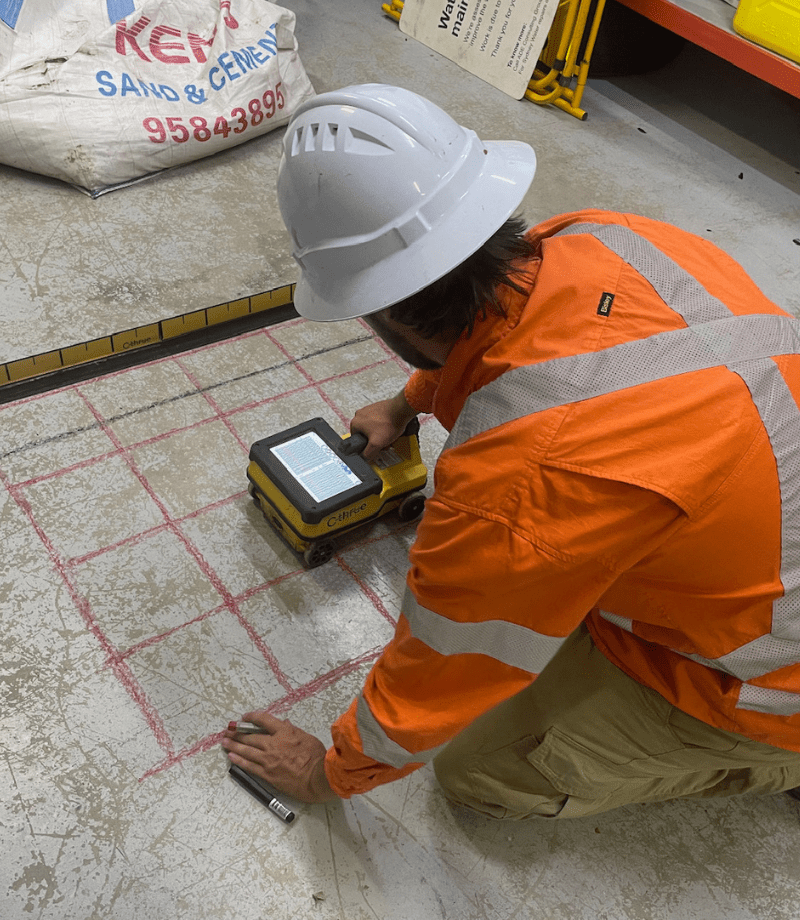Enhance Task Performance with RainierGPR Concrete Scanning Providers
Enhance Task Performance with RainierGPR Concrete Scanning Providers
Blog Article
Exploring the Depths: A Comprehensive Guide to Concrete Scanning and Its Diverse Applications
In the realm of building and infrastructure advancement, the thorough procedure of concrete scanning holds a crucial role in making sure the architectural honesty and safety and security of tasks. As innovation continues to advance, the applications of concrete scanning have actually expanded much beyond simple surface-level evaluations.
Value of Concrete Scanning
Recognizing the importance of concrete scanning is important in guaranteeing the safety and honesty of structures during construction and improvement tasks. Concrete scanning uses sophisticated technologies such as ground-penetrating radar (GPR) and electro-magnetic induction to discover ingrained objects, voids, or various other anomalies within concrete frameworks.
In addition, concrete scanning plays a pivotal function in ensuring compliance with building regulations and regulations that mandate the defense of existing structural parts during building tasks. By accurately drawing up the internal structure of concrete, scanning modern technologies enable building and construction professionals to make enlightened decisions that maintain the architectural stability and durability of structures and framework jobs. In significance, the importance of concrete scanning depends on its capacity to safeguard both the architectural honesty and the personnel associated with building endeavors.
Technologies Utilized in Concrete Scanning
Concrete scanning relies on sophisticated innovations such as ground-penetrating radar (GPR) and electro-magnetic induction to precisely identify ingrained items and abnormalities within concrete frameworks. Ground-penetrating radar runs by producing high-frequency electromagnetic waves right into the concrete.
Electromagnetic induction, on the various other hand, functions by producing electromagnetic fields around a concrete framework through a transmitter coil. When metal items are existing within the concrete, they interfere with these magnetic fields, creating eddy currents to flow via the steel. By determining the changes in the magnetic fields with a receiver coil, the system can pinpoint the area of metal items in the concrete.
These sophisticated modern technologies play a crucial duty in non-destructive testing, guaranteeing the security and integrity of concrete frameworks in different industries.
Applications in Construction Industry
Within the building industry, concrete scanning technology discovers varied applications that improve task efficiency and security. Furthermore, concrete scanning is used for locating spaces, such as air pockets or areas of wear and tear within concrete, which can jeopardize the overall strength of a structure. Concrete scanning plays a critical duty in top quality control by validating the thickness of concrete covers over reinforcement, ensuring conformity with layout specs and requirements.

Safety Advantages of Concrete Scanning
In the realm of building and construction safety, the application of concrete scanning technology provides an extremely important advantage in preemptively recognizing potential dangers and strengthening structural integrity. By using innovative scanning approaches such as ground-penetrating radar (GPR) and electromagnetic induction, construction teams can precisely situate rebar, post-tension cords, conduits, and other concealed things within concrete frameworks. This positive technique significantly reduces the danger of unexpected strikes throughout drilling, cutting, or coring activities, thus avoiding pricey problems, injuries, and task hold-ups.
Additionally, concrete scanning enhances employee security by providing real-time details regarding the structural problem of concrete aspects. By resolving potential safety and security worries immediately, concrete scanning contributes to developing a protected functioning environment and mitigating the likelihood of architectural failings or mishaps on building my blog websites.
Future Patterns in Concrete Scanning
Emerging improvements in scanning modern technology are poised to revolutionize the field of concrete evaluation and evaluation. By harnessing the power of AI, these systems can analyze large amounts of Get More Information data accumulated throughout scanning procedures to provide more thorough and exact understandings right into the condition of concrete structures.
One more substantial fad is the growth of even more user-friendly and mobile scanning tools. Miniaturization of scanning equipment allows for simpler access to confined spaces and remote places, making examinations extra reliable and thorough. Furthermore, improvements in cordless communication technologies make it possible for real-time information transfer and evaluation, assisting in quicker decision-making processes.
Moreover, there is an expanding concentrate on sustainability in concrete scanning innovations - RainierGPR Concrete Scanning. Producers are increasingly including environmentally friendly materials and energy-efficient features right into their gadgets to reduce ecological effect. These future patterns are readied to boost the efficiency, their explanation precision, and sustainability of concrete scanning techniques, shaping the industry's future landscape
Final Thought
To conclude, concrete scanning plays an important role in the construction market by making certain the security and performance of numerous jobs. By making use of innovative technologies, such as GPR and radar imaging, specialists have the ability to accurately find prospective hazards within concrete frameworks. The applications of concrete scanning are vast and proceed to evolve, making it a vital device for maintaining the stability of structures and infrastructure. As technology developments, the future of concrete scanning holds promising developments for enhancing building and construction processes.

Report this page